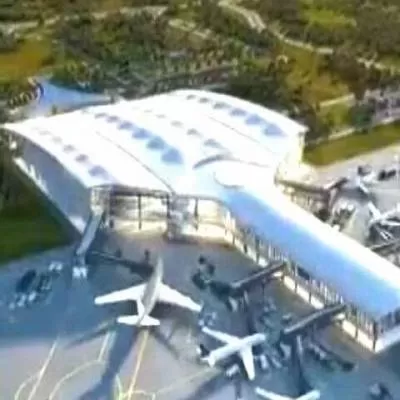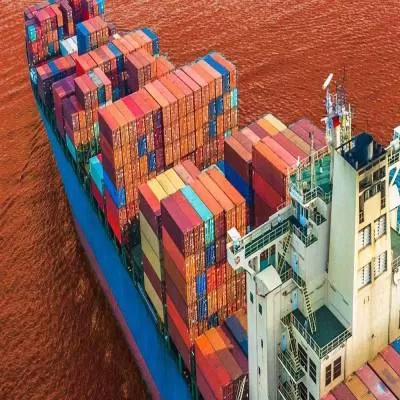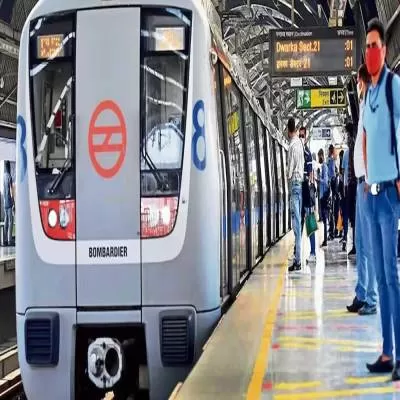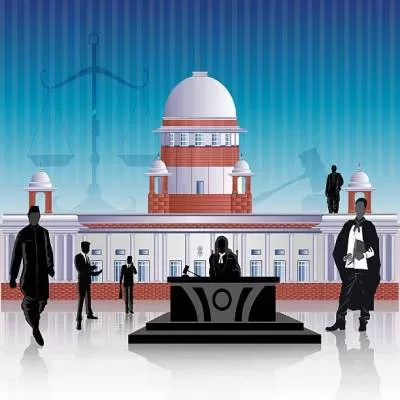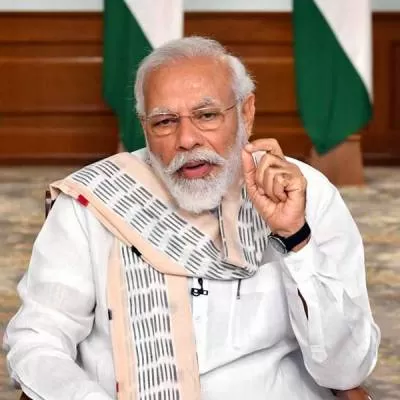- Home
- Infrastructure Urban
- ECONOMY & POLICY
- Raring To Go
Raring To Go
If agriculture is the heart of our nation, infrastructure is its backbone. The greater emphasis by the present government on infrastructure development and on ease of doing business in the past two years, has led to improving sentiments in the infrastructure segment. Over the past two years, there have been a slew of reforms in the infrastructure segment. On the policy side, various measures have been taken to clear stalled projects, and also to ensure that future projects don´t meet the same fate. The efforts of our central bank also need to be lauded. The Reserve Bank of India (RBI) has brought in some much-needed regulations to bring order to a chaotic financial sector.
Within the past two years, we have seen many bills like the Land Acquisition Bill and the GST Bill being passed, and laws like the Bankruptcy Law and the SARFAESI Act being enacted. On its part, the RBI has introduced various infra-friendly schemes like the 5/25 restructuring scheme and the Scheme for Sustainable Structuring of Stressed Assets. Infrastructure debt funds and the National Infrastructure Investment Fund were also introduced with the aim of facilitating investments and easing pressure on projects.
Recently, the Cabinet Committee on Economic Affairs (CCEA) approved an arrangement to pay in an escrow account, 75 per cent of the arbitral award amount for cases under which an arbitral award is challenged. This amount has to be used by the contractors to complete stalled projects and thus service the lenders. Also, the disputes will be moved under a faster arbitration framework.
It is estimated that, in the next five years, we need around Rs 31 trillion to meet our infrastructure targets. While the government has done many good things to increase the spending outlay to the sector (Rs 3.4 trillion was allocated to infrastructure in the Union Budget 2016-17), we need equal participation from the private players to reach anywhere near the set targets. The infrastructure sector needs continuity of funding. We have projects set for smart cities, mass rapid transit systems, metros, high speed rail connectivity, dedicated freight corridors, expansion of the national and state highway networks, Bharatmala project and the Sagarmala project.
Looking at different sectors, roads have enjoyed the most attention in the recent past. At the end of 2015, roads supported around 57 per cent of the total freight movement. National highways, which carry 40 per cent of the total traffic, account for only 2 per cent of the total roads in India.
Overall, cumulative investments for the next five years (as compared to the last five financial years) in the roads sector are expected to double, almost touching the Rs 10 trillion mark. For national highways, this number will increase almost four times.
Power punch
In power, we recently reached a debatable stage of self-sufficiency in generation, and the growth in power capacity additions is therefore expected to slow down. India has a total installed capacity of around 305 GW, which is significantly higher than the peak demand met of 148 GW. Yet, about 300 million people in India still lack access to electricity. The next step for the sector is to focus on equitable distribution of power, and provide power where even the roads haven´t reached. Most major states have claimed that they will be self-sufficient in power generation within a year or two. It is also believed that the cost of power can be brought down, which will increase the affordability to consumers. We are also complementing our traditional power generation with increasing investments in renewable energy resources. Solar power capacity additions are expected to increase at a CAGR of ~50 per cent over the next three years.
For the railways, the construction spend from FY2017-FY2020 is expected to increase almost two-fold and cross the Rs 2.5 trillion mark. The most prominent project - Dedicated Freight Corridors (Eastern and Western) - are well on track in terms of land acquisition and funding. Already, around 75 per cent of the civil projects have been awarded. On the high-speed rail front, there have been significant developments, including the studies for the proposed bullet train between Mumbai and Ahmedabad.
Shipshape
Coastal shipping is also being developed rapidly. In FY2016, we saw record capacity additions at the major ports in India. The Sagarmala project aims to increase the share of coastal and inland waterways in India´s modal mix, to almost double at 12 per cent, by 2025. The National Waterways Bill will help convert 100-plus rivers and creeks into waterways transport. These steps are necessary for our country, where transportation cost is a big issue for many sectors. India will more than welcome transportation through the cheapest mode - the waterways.
All this bodes well for the Indian construction equipment market, which grew at about 37 per cent YoY from January 2016 to June 2016, as per research firm Off-Highway Research. The sector is expected to grow at 20 per cent in 2016, over the previous year. This growth is coming on the back of modest growth of 2 per cent in 2015 and a de-growth of 14 per cent in 2014. The complete turnaround in the Indian construction equipment market is a remarkable achievement. By 2020, we should see the sales of equipment surpass the all-time high (of around 68,000 equipment sales) achieved in 2011. Going forward, we expect the overall equipment market to register a growth of 15-20 per cent in the coming years. The growth in the equipment market is an indication of the condition of the infrastructure sector. Such encouraging numbers are a testimony to the resurging Indian infrastructure sector.
Game changer
And on top of this all, the biggest change that the government has ushered in so far, is the passing of the GST Bill. Termed as a game-changer for the country, it promises a unified single tax structure, which will put a limit on the total tax incidence, curb evasion, and enable free movement of goods within the country. Depending on the GST rates finalised, the cost of construction materials may go down by 5-10 per cent. This should help bring down the cost of construction. GST will resolve this problem of dual taxation, and a major beneficiary of this tax regime will be the construction equipment segment.
It is said that ´stronger the foundation, stronger the apex´. I believe that this resurgence which we are witnessing, is based on a strong foundation. Moving away from populism, some tough decisions have been taken. Today, we have an economy which is ready for rapid urbanisation. A robust connected network is needed in every city, town and village. We have entrepreneurs who are now ready to connect to Tier-II and Tier-III centres, and are poised to go beyond. But for that, they need both quantitative and qualitative infrastructure, a task well acknowledged by the government.
About the author: Devendra Kumar Vyas, CEO, Group Financial Services, Srei, has reshaped India´s equipment finance industry. He has around two decades of experience in infrastructure and equipment financing.
The government has got its act together in the infrastructure sector, and the stage is set for a complete overhaul of this resurgent space, says DEVENDRA KUMAR VYAS. If agriculture is the heart of our nation, infrastructure is its backbone. The greater emphasis by the present government on infrastructure development and on ease of doing business in the past two years, has led to improving sentiments in the infrastructure segment. Over the past two years, there have been a slew of reforms in the infrastructure segment. On the policy side, various measures have been taken to clear stalled projects, and also to ensure that future projects don´t meet the same fate. The efforts of our central bank also need to be lauded. The Reserve Bank of India (RBI) has brought in some much-needed regulations to bring order to a chaotic financial sector. Within the past two years, we have seen many bills like the Land Acquisition Bill and the GST Bill being passed, and laws like the Bankruptcy Law and the SARFAESI Act being enacted. On its part, the RBI has introduced various infra-friendly schemes like the 5/25 restructuring scheme and the Scheme for Sustainable Structuring of Stressed Assets. Infrastructure debt funds and the National Infrastructure Investment Fund were also introduced with the aim of facilitating investments and easing pressure on projects. Recently, the Cabinet Committee on Economic Affairs (CCEA) approved an arrangement to pay in an escrow account, 75 per cent of the arbitral award amount for cases under which an arbitral award is challenged. This amount has to be used by the contractors to complete stalled projects and thus service the lenders. Also, the disputes will be moved under a faster arbitration framework. It is estimated that, in the next five years, we need around Rs 31 trillion to meet our infrastructure targets. While the government has done many good things to increase the spending outlay to the sector (Rs 3.4 trillion was allocated to infrastructure in the Union Budget 2016-17), we need equal participation from the private players to reach anywhere near the set targets. The infrastructure sector needs continuity of funding. We have projects set for smart cities, mass rapid transit systems, metros, high speed rail connectivity, dedicated freight corridors, expansion of the national and state highway networks, Bharatmala project and the Sagarmala project. Looking at different sectors, roads have enjoyed the most attention in the recent past. At the end of 2015, roads supported around 57 per cent of the total freight movement. National highways, which carry 40 per cent of the total traffic, account for only 2 per cent of the total roads in India. Overall, cumulative investments for the next five years (as compared to the last five financial years) in the roads sector are expected to double, almost touching the Rs 10 trillion mark. For national highways, this number will increase almost four times. Power punch In power, we recently reached a debatable stage of self-sufficiency in generation, and the growth in power capacity additions is therefore expected to slow down. India has a total installed capacity of around 305 GW, which is significantly higher than the peak demand met of 148 GW. Yet, about 300 million people in India still lack access to electricity. The next step for the sector is to focus on equitable distribution of power, and provide power where even the roads haven´t reached. Most major states have claimed that they will be self-sufficient in power generation within a year or two. It is also believed that the cost of power can be brought down, which will increase the affordability to consumers. We are also complementing our traditional power generation with increasing investments in renewable energy resources. Solar power capacity additions are expected to increase at a CAGR of ~50 per cent over the next three years. For the railways, the construction spend from FY2017-FY2020 is expected to increase almost two-fold and cross the Rs 2.5 trillion mark. The most prominent project - Dedicated Freight Corridors (Eastern and Western) - are well on track in terms of land acquisition and funding. Already, around 75 per cent of the civil projects have been awarded. On the high-speed rail front, there have been significant developments, including the studies for the proposed bullet train between Mumbai and Ahmedabad. Shipshape Coastal shipping is also being developed rapidly. In FY2016, we saw record capacity additions at the major ports in India. The Sagarmala project aims to increase the share of coastal and inland waterways in India´s modal mix, to almost double at 12 per cent, by 2025. The National Waterways Bill will help convert 100-plus rivers and creeks into waterways transport. These steps are necessary for our country, where transportation cost is a big issue for many sectors. India will more than welcome transportation through the cheapest mode - the waterways. All this bodes well for the Indian construction equipment market, which grew at about 37 per cent YoY from January 2016 to June 2016, as per research firm Off-Highway Research. The sector is expected to grow at 20 per cent in 2016, over the previous year. This growth is coming on the back of modest growth of 2 per cent in 2015 and a de-growth of 14 per cent in 2014. The complete turnaround in the Indian construction equipment market is a remarkable achievement. By 2020, we should see the sales of equipment surpass the all-time high (of around 68,000 equipment sales) achieved in 2011. Going forward, we expect the overall equipment market to register a growth of 15-20 per cent in the coming years. The growth in the equipment market is an indication of the condition of the infrastructure sector. Such encouraging numbers are a testimony to the resurging Indian infrastructure sector. Game changer And on top of this all, the biggest change that the government has ushered in so far, is the passing of the GST Bill. Termed as a game-changer for the country, it promises a unified single tax structure, which will put a limit on the total tax incidence, curb evasion, and enable free movement of goods within the country. Depending on the GST rates finalised, the cost of construction materials may go down by 5-10 per cent. This should help bring down the cost of construction. GST will resolve this problem of dual taxation, and a major beneficiary of this tax regime will be the construction equipment segment. It is said that ´stronger the foundation, stronger the apex´. I believe that this resurgence which we are witnessing, is based on a strong foundation. Moving away from populism, some tough decisions have been taken. Today, we have an economy which is ready for rapid urbanisation. A robust connected network is needed in every city, town and village. We have entrepreneurs who are now ready to connect to Tier-II and Tier-III centres, and are poised to go beyond. But for that, they need both quantitative and qualitative infrastructure, a task well acknowledged by the government. About the author: Devendra Kumar Vyas, CEO, Group Financial Services, Srei, has reshaped India´s equipment finance industry. He has around two decades of experience in infrastructure and equipment financing.


